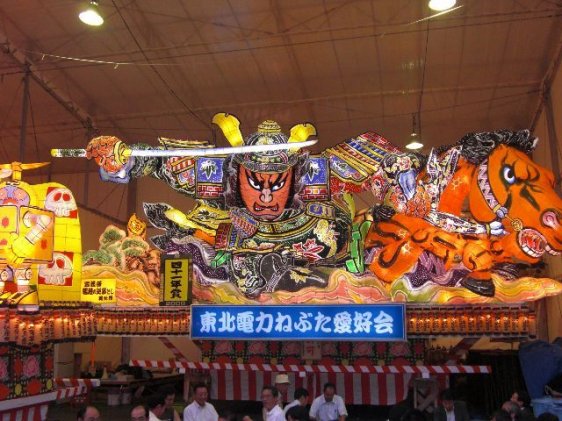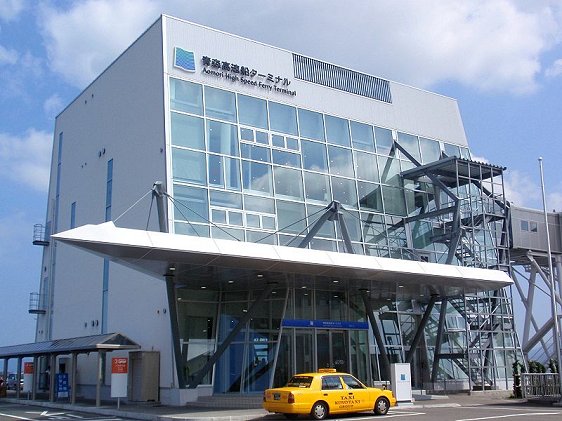Aomori (Japanese: 青森市), also called Aomori City, is the capital of Aomori Prefecture, Japan. It covers 824.52 sq km (318.35 sq mi) and has a population of 302,000 people. The city is occupies the area to the south of Mutsu Bay. Further to the south of it lies the Hakkoda Mountains.
Human habitation in the Aomori area goes back to the prehistoric period. A number of Jomon sites have been discovered, including the Sannai-Maruyama Ruins, dated to between 5,500 to 4,000 BC. During the Heian period, the area was ruled by the Northern Fujiwara clan. It passed to the Nambu clan during the Kamakura period, and to the Tsugaru clan in the Sengoku period.
Originally called Uto, Aomori developed as a port during the Edo period. It was renamed Aomori in 1626, but the name only came into common use from 1783. It was only granted town status in 1889 and city status in 1898.
Festivals in Aomori
Aomori celebrates the Aomori Nebuta Festival, where giant floats are paraded through the streets. This takes place every year from 2-7 August.
 Nebuta Festival Float
Nebuta Festival FloatSource: http://commons.wikimedia.org/wiki/File:Nebuta_denryoku.jpg
Author: YoshikawaS
 Aomori High Speed Ferry Terminal
Aomori High Speed Ferry Terminal
Looking for information on Penang? Use this Map of Roads in Penang to zoom in on information about Penang, brought to you road by road.

Author: YoshikawaS
 Aomori High Speed Ferry Terminal
Aomori High Speed Ferry TerminalSource: http://commons.wikimedia.org/wiki/File:Aomori_High_Speed_Ferry_Terminal.JPG
Author: Morigen

Author: Morigen

Planning your trip to Aomori
There are flights to Aomori from Tokyo Haneda Airport, Nagoya Centrair, Osaka Itami and Kansai Airports, Sapporo Airport and Fukuoka Airport. It is also the northern terminus of the Tohoku Shinkansen bullet trains.Sights & Attractions to visit in Aomori
- Asamushi Aquarium
- Asamushi Onsen
- Aomori City Forestry Museum
- Aomori Prefectural Folk Museum
- Aomori City History and Folk Arts Museum
- Munakata Shiko Memorial Museum of Art
- Nebuta-no-sato Museum
- Sannai-Maruyama Ruins
- Seiryu-ji
 Latest updates on Penang Travel Tips
Latest updates on Penang Travel Tips
 Map of Roads in Penang
Map of Roads in Penang
Looking for information on Penang? Use this Map of Roads in Penang to zoom in on information about Penang, brought to you road by road.
Copyright © 2003-2025 Timothy Tye. All Rights Reserved.

 Go Back
Go Back